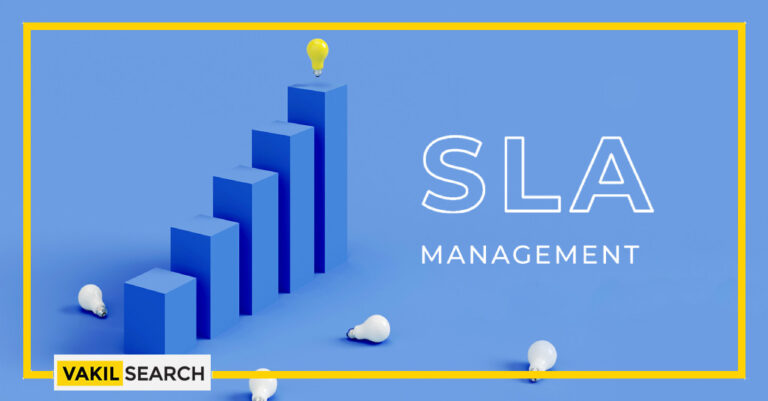Read this article to learn about the essential components of an OLA or an Operational Level Agreement.
Service level management requires operational level agreements (OLAs). Working jointly with others to set realistic expectations regarding services and associated logistics is part of the partnership. Internally, an OLA can assist you in managing relationships with individuals you serve.
What Is the Meaning of an OLA?
OLAs are legal documents that define how information technology (IT) organisations and service providers intend to deliver a service and track performance indicators for an internal customer. An OLA is a document that outlines the scope and depth of tasks and duties assigned to firm departments.
These agreements differ from service level agreements (SLAs), which handle the needs of external customers. However, SLA delivery is contingent on OLA performance. Thus your department or team should carefully negotiate them.
Examples
You must make crucial promises to internal customers under OLAs. Your capacity to provide service and hardware is critical to your ability to create income. Every OLA, for example, must ensure that the customer has no more than a particular amount of downtime.
To illustrate the idea, consider the following hypothetical OLA between an IT vendor and an internet service provider (ISP):
- Company A, an ISP, uses an IT provider to support a database. • Company A delivers Internet SLAs to external clients.
- Company A signs an OLA with the IT database vendor; the IT network vendor’s OLA specifies that they must deliver 23 hours of daily uptime; Company A can sue for money losses if there is too much downtime; IT database suppliers who fulfil standards will retain clients.
As you’ve seen, the SLA is highly dependent on the OLA’s promises and limits. Because of their complexity, you should carefully develop, negotiate, and approve your OLAs, including several key elements that safeguard your company’s fiduciary interests.
Term Usage in OLAs
An OLA, like any contract, has several essential clauses that define the relationship’s terms of service, such as duties, responsibilities, and limits. While the OLA contains many of the same elements as a regular contract, other sections distinguish it.
The following are examples of OLA terms:
- General Overview: This section of an OLA describes the relationship’s goals, identifies parties, and sets the stage for the connection. Responsibility, roles, and obligations should all be mentioned. The broad overview also specifies the start and end dates of a contract.
- Scope of Service: This part provides a technical description of the service. It should also account for upgrades, modifications, and duties that the OLA does not cover.
- Service Dependencies: List the supporting services dependent on the vendor’s deliveries. This section may also have a significant impact on the technical components of the contract.
- Parties in Charge: If a problem emerges, the internal customer must be able to contact the appropriate people. Vendors should list the names, hours, phone numbers, and emails of people they can get in this area.
- Roles and responsibilities: This section discusses how all parties involved contribute to delivering services. Describe the steps for training, gathering times, and change notification. Include the activities wherein the supplier is required to participate.
- Incident Management: Suppliers and providers must communicate openly. Standard anticipated and ad-hock requests and how they agree to process them should be listed in this area of your OLA. The procedure must be divided into routine and significant situations.
- Problem Resolution: If a problem emerges, the internal customer requires reasonable certainty that you will be able to solve it. An issue management section allows the IT provider to create a list of “what-if” scenarios and explain contingencies and actions for resolving detected issues.
- Service Exceptions: This clause is critical because it restricts the extent and depth of your connection to the incident and problem management. It is unjust for a vendor to deal with issues outside its control. In this section, list the exceptions.
- Metrics and Goals: The OLA relationship relies heavily on key performance indicators (KPIs). The organisation should demand that the vendor track specific metrics and make them accessible to key team members.
Operational Level Agreements (OLAs)
Operational level agreements are frequently used in conjunction with other contracts. This technique provides external clients with assurance from the SLA provider, making it even more important to examine and negotiate the OLA ahead of time. In addition, both agreements safeguard each party’s rights throughout the relationship.
In general, operational level agreements involve three types of contracts:
- Type 1: SLAs are contracts between a service supplier and a customer. They define the extent and quality of the services to be provided. An SLA specifies the deadlines for accepting and resolving tickets before they are escalated.
- Type 2: OLAs are agreements between an inside provider and an existing customer. They define the scope and quality of the contract’s services, such as ticket response time and server availability.
- Type 3: UCs are contracts between an outsourcing supplier and an existing customer. They specify the scope and extent of services that will be provided. A UC is similar to an OLA in terms of tracking performance.
In the process, you should think about your relationship with each stakeholder. You may require a combination of two agreements, while certain businesses may require more. The contract you create is based on your firm’s unique circumstances and dynamics.
The Distinction Between OLAs And SLAs
Before discussing and negotiating OLAs with internal teams, service providers frequently deal with SLAs with clients. This technique, however, is not always the most practical. While SLAs make direct guarantees to customers, an OLA assists teams in identifying any cost differentials, restrictions, and other dynamics.
Other differences between OLAs and SLAs include:
- Difference 1: A network operator and a prospective customer have SLAs. OLAs occur between an organisation’s internal support departments that have agreed to the SLA.
- Difference 2: Service Level Agreements (SLAs) focus on the service side of the contract, such as availability and performance. OLAs, on the other hand, are pledges to keep the service running.
- Difference 3: SLAs apply to overall ticket resolution, whereas OLAs relate to individual support teams to which tickets are assigned.
- Difference 4: Compared to SLAs, OLAs use more technical vocabulary, measures, and language.
Conclusion
To suit company goals, contract terms must generally meet your business requirements. Before negotiating, technology lawyers can analyse the proposed agreement with you and identify any potential difficulties. Your lawyer guarantees that you receive a fair OLA while comprehending its legal ramifications during the contract preparation process.
Read More:
- How Does Internal SLA Benefit the Entire Company?
- What Makes a Service Level Agreement Different from KPI?
- Four Different Aspects of Service Level Agreements










